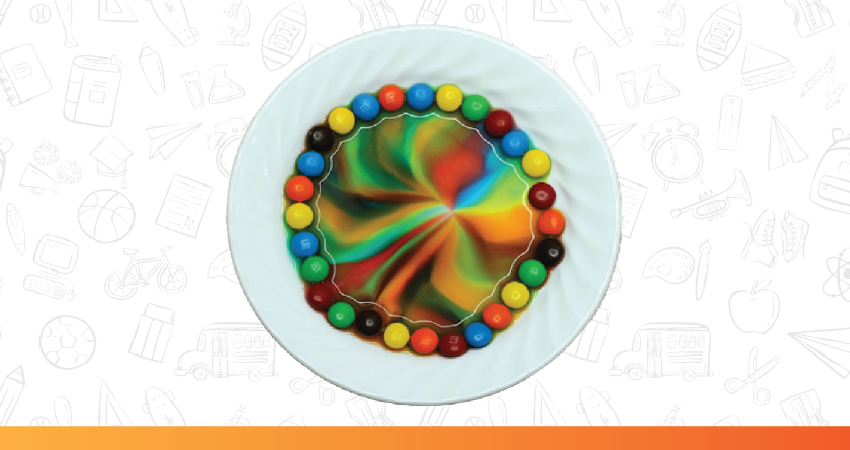6 Science Experiments for Kids with Candies!
orchidadmin |
Parents Corner |
2024-08-09 |
null mins read

Table of Contents
Sweet Science Experiments
Yum! Candies…one of the most favorite confectioneries of both children and adults. Jelly beans, M&Ms, and the fascinating Pop Rocks teleport adults to childhood and children to an oasis that we’ve all been to at some point in life. However, candies aren’t just useful when we toss them in our mouths and feel a flood of flavours down our throats. Nope. You, a responsible parent who somehow ended up with a bag of candies, now have to help your kid with their science project experiments for the school fair. How do you do that?
Well, there are several science experiments you can do with candies. And these little science experiments are completely safe, so children can even perform them themselves without your supervision. As a bonus, these experiments may pique the child’s curiosity and pave the way for them to pursue a career in science! So without further delay, here are six candy experiments you can teach your kids right now, starting with the classic…
Mentos-Soda Volcano
- Wrap a piece of paper around the mentor tube in a way that the paper acts as a channel when you upend the mentos container.
- Open the cap of the soda you bought, ideally Diet Coke.
- Put a card on top of the soda and cover its opening.
- Now open the mentos cap and place the open end of the paper channel directly above the soda’s opening that is covered by the card.
- Get ready to run and pull the card out.
- As soon as the Mentos fall into the soda, it erupts high and splashes foamy soft drink all around.
- Yes, it CAN get messy!

What kids learned: Rapid expansion of gases will create an explosion.
M&Ms and Chromatography
To perform this candy science experiment, all you have to do is:
- Tear open a bag of M&Ms and take out five or six candies (they must be different colored ones).
- Take the number of basket coffee filters and put them on a plate.
- Dip the M&Ms in warm water, and then place them on the center of the filter.
- As the outer coating of the candies dissolves, some of them will not dissolve into one color.
- The red, blue, green, and yellow coatings will dissolve as their respective colors, but colors such as violet will dissolve into two colors because red and blue forms violet, blue and yellow forms orange.
What kids learned: Primary colors can not be created by any other colors, but secondary colors can be created by combining two or more colors.
Starlights Mint Art
- Place five or six white and red Starlight Mints on different corners of a plate.
- Gently pour lukewarm water over the candies.
- The red stripes will dissolve and merge into other red stripes, creating a beautiful pattern on the plate.
What kids learned: Sugar is solid, but it dissolves when it contacts water.
Sink or Float Candy
- Have a jug of water on the table and sit around it.
- Make a chart with the names of different candies you are going to use for the experiment.
- Ask your child to drop the candies into the jug.
- Candies such as Skittles will sink straight away, while other candies with marshmallow or nougat as their primary ingredient will float.
What kids learned: The density of molecules. If it is higher than water, they sink. And if the density is lower, they float.
M&M Rainbow
- Take five different colored M&Ms and place them around in the bottom of a plate (preferably a white plate).
- Heat a jug of water and let it rest for five minutes.
- When the water is lukewarm, gently pour it into the plate.
- The coatings of the M&Ms will slowly dissolve into vivid primary colors.
- Even though they all stay in the same plate, they would not mix, giving it an appearance of a melted rainbow.

What kids learned: Primary colors can not mix naturally.
Candies that Melt
- Prepare a list of candies and chocolates in large quantities with your children’s input.
- Ask the children to make predictions on what candies, when placed on the open, under the scorching sunlight, would melt.
- Note their predictions on the chart.
- Place all the candies on a plate and keep it outside.
- Wait for two or three hours and go check which are the candies that melted and which didn’t.
- Most candies will melt because the molecules in them will move around freely when heated, thus practically turning them into liquid.
What kids learned: In this candy science experiment children learned that heat converts solid into a liquid, and the point at which the molecules begin to move freely is called the melting point.
Conclusion
Let’s level. Candies are sweet. And science experiments are cool. And what happens when we combine them both for science experiments? Not ice-creams, but a screeching child who genuinely enjoys the process. Kids love scientific experiments way more than reading pages and pages of drab text. So hooking them to science by showing it in action will work in everyone’s favor. At first, children would repeat the science experiments, but when they eventually get bored, they would seek to do more. It would make them want to research and study more. In short, performing a science experiment with your little one can get messy, but never go wrong. Be it a science project or just for fun, these fun experiments can be performed anytime. All you need are some candies!
Also read..
Five Tips to Stop the Summer “Brain Drain”
5 Fun Reading Games and Activities for Kids that teachers need to know

